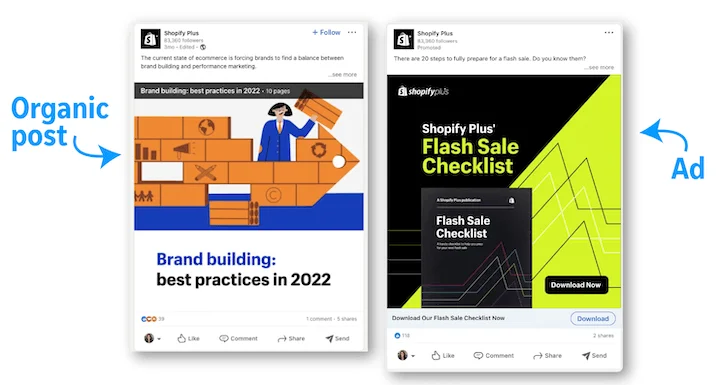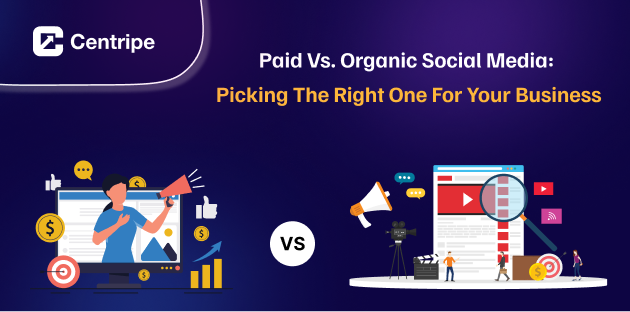Running a business today means staying active on social media. But you might be wondering, should you grow your page naturally or spend on ads? Or maybe use both?
This decision is actually vital as it determines the way you relate with others and expand your brand on the internet.
Organic social media means posting and engaging with followers without paying for reach. Paid social media, on the other hand, means using ads to get your posts seen by more people or a specific type of audience.
They both can be useful to your business, you only have to determine which one fits your purposes, time and budget.
Continue to read to know how each of them works, their advantages and disadvantages, and how you can determine the right mix.
Understanding Organic Social Media

Organic social media is all about growing your presence naturally. You share, respond to comments, and interact with your followers, not paying none extra to get more reach.
It’s like building friendships, slower, but stronger and more real.
There is a different crowd on each social media platform.
To illustrate, LinkedIn is better for talking business and making professional posts, whereas Instagram is better for demonstrating products, photos, or behind-the-scenes pictures.
To monitor the performance of your organic activity, monitor such indicators as reach, likes, comments, sharing, and the growth of followers. These tell you how well your posts are connecting with people.
Good Things About Organic Social Media
- Doesn’t cost much money:
You don’t need a big budget to do organic social media.
The main thing you’re spending is your time making posts and talking to people online. This means even tiny businesses can do it.
- Feels real and honest:
When you post organically, it doesn’t feel like a sales pitch.
Individuals can realize that it is authentic, and this makes them have confidence in you. Share what is going on in your business, present your staff members, and display what your customers are doing with your products.
This makes your brand feel like a real person, not just a company.
- Builds something lasting:
By continuing to provide useful or interesting content and even engaging your followers in conversation, you are establishing relationships that will last.
People become loyal fans who tell their friends about you. This kind of growth doesn’t happen overnight, but it’s solid.
Building a strong organic presence requires a well-planned social media strategy that focuses on consistent, valuable content.
The Tricky Parts of Organic Social Media
- Takes forever to see results:
It is time-consuming to gain a following without incurring expenses. It could take months and even years before you get a huge following and plenty of interaction.
This can be extremely frustrating in case you want quick results.
- Platform rules can mess things up:
The social media sites keep evolving in the way they determine what appears on the feed of the people.
There are instances when even your own followers do not view what you have posted. This renders the difficulty of contacting individuals on a regular basis.
- You need certain skills:
It is not always easy to create content that people would want to see.
It may be necessary that you learn how to create graphics, write catchy posts, or create videos. Many businesses turn to professional social media management services to handle content creation and posting consistently.
Benefits
Organic social media builds reputation and trust. Over time, it grows your brand without spending much money. It keeps your audience connected and loyal, making it ideal for steady, long-lasting growth.

Understanding Paid Social Media
Paid social media refers to the situation of paying money to have your posts or ads viewed by a larger number or particular group of people. It assists your content in connecting with people besides your followers.
Advertising can be done on Facebook, Instagram, LinkedIn, Twitter, TikTok Tok etc.
Both platforms will provide you with options to choose your audience and goals, such as visits to the site, sales, or brand awareness.
Businesses tend to monitor clicks, impressions, conversions, cost per click (CPC), and return on ad spend (ROAS) in order to measure performance. Understanding your cost per acquisition helps you determine whether your paid campaigns are profitable and worth the investment.
Good Things About Paid Social Media
- Works fast:
In the case of paid adverts, you will see the results as soon as possible. Individuals begin to visit your site, purchase goods or services, or subscribe to something almost instantly.
It is ideal when you are on a sale or introducing something new, and you demand attention at the shortest time.
- Super specific targeting:
You select precisely who views your ads, dependent on their age, their geographical location, their hobbies, and what they do on the web.
That way, when you get your message across, it gets to the right people rather than being wasted on those who do not care.
You get a lesser amount of bang and more opportunities to make sales. Effective ad targeting ensures your budget is spent reaching people most likely to convert into customers.
- Great tracking tools:
Paid advertisements provide you with all the details. You are able to see the entire journey a person goes through after viewing your advertisement until the point when they purchase your product.
This will be useful because you will see which of your campaigns is doing well and which ones require some adjustments, and therefore, maximize the income you got out of them.
The Downsides of Paid Social Media
- Expensive: Paid ads cost money, and the more competition your industry has, the higher the cost can be.
- Short-term impact: Ads stop showing once you stop paying, and people can get tired of seeing the same promotions.
- Require consistent work: You will need to refresh your advertisements and continue testing as a way of keeping good results.
Benefits
Paid social media assists in increasing in a short time and reaching the correct audience. It is excellent to achieve more visibility and sales within a short period, not least when you have a marketing budget to use.
Organic vs. Paid Social Media: Comparison Table
| Criteria | Organic Social Media | Paid Social Media |
|---|---|---|
| Definition | Free posting and engagement | Sponsored or paid ads |
| Cost | No spend, just time and effort | Requires a regular budget |
| Reach | Limited to your followers | Can reach anyone you target |
| Targeted Audience | Reaches your followers | Let you choose who sees your posts |
| Measurable Results | Limited data | Accurate tracking through analytics |
| Authenticity | Builds real and personal connections | Feels more promotional or polished |
| Long-Term Benefits | Builds trust and loyal followers | Works as long as you invest money |
| Speed of Results | Slow and steady | Fast and measurable |
| Control Over Content | You control everything you post | Must follow ad platform rules |
| Audience Engagement | Grows through genuine content | Grows through paid promotions |
| Flexibility | Can post whatever suits your tone | Must meet platform ad guidelines |
| Budget Fit | Best for tight budgets | Better for those who can invest more |
Conclusion
Both organic and paid social media are useful in different ways.
If you have more time than money, go organic and build trust slowly. However, if you want faster growth or need quick visibility, consider investing in paid ads.
The best approach is often a mix post regularly to keep your audience connected and use ads when you want to reach new people or boost sales.
